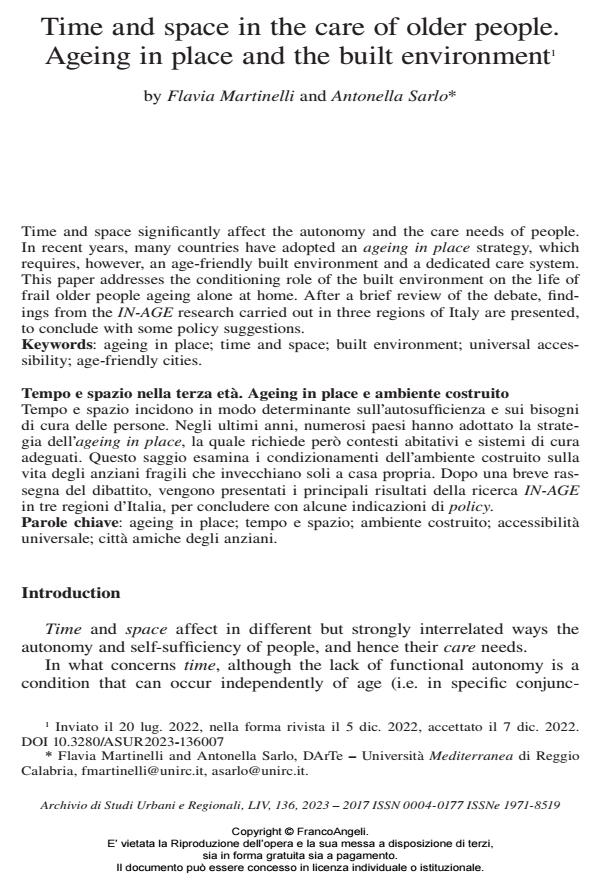Time and space in the care of older people. Ageing in place and the built environment
Journal title ARCHIVIO DI STUDI URBANI E REGIONALI
Author/s Flavia Martinelli, Antonella Sarlo
Publishing Year 2023 Issue 2023/136
Language English Pages 25 P. 147-171 File size 221 KB
DOI 10.3280/ASUR2023-136007
DOI is like a bar code for intellectual property: to have more infomation
click here
Below, you can see the article first page
If you want to buy this article in PDF format, you can do it, following the instructions to buy download credits

FrancoAngeli is member of Publishers International Linking Association, Inc (PILA), a not-for-profit association which run the CrossRef service enabling links to and from online scholarly content.
Time and space significantly affect the autonomy and the care needs of people. In recent years, many countries have adopted an ageing in place strategy, which requires, however, an age-friendly built environment and a dedicated care system. This paper addresses the conditioning role of the built environment on the life of frail older people ageing alone at home. After a brief review of the debate, findings from the IN-AGE research carried out in three regions of Italy are presented, to conclude with some policy suggestions.
Keywords: ageing in place; time and space; built environment; universal acces- sibility; age-friendly cities.
- Towards habitation?—Community initiatives for seniors in Austria and the Netherlands Benjamin Baumgartner, Valentin Fröhlich, Florian Pimminger, Hans Volmary, in Berliner Journal für Soziologie /2025
DOI: 10.1007/s11609-025-00580-5 - Caring Communities and Urban Cultures of Care for Older People in Austria, Hungary, and The Netherlands Valentin Fröhlich, Dóra Gábriel, Florian Pimminger, in Urban Planning 10038/2025
DOI: 10.17645/up.10038
Flavia Martinelli, Antonella Sarlo, Time and space in the care of older people. Ageing in place and the built environment in "ARCHIVIO DI STUDI URBANI E REGIONALI" 136/2023, pp 147-171, DOI: 10.3280/ASUR2023-136007